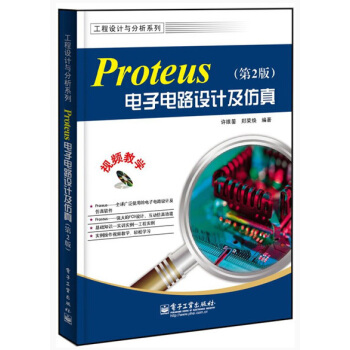![4G:LTE/LTE-Advanced 宽带移动通信技术(影印版) [4G LTE/LTE-Advanced for Mobile Broadband]](https://pic.qciss.net/11032985/rBEGDVAPZCIIAAAAAAFZKkPfdAoAABQMQG3fR0AAVlC122.jpg)

具体描述
内容简介
《4G:LTE/LTE-Advanced 宽带移动通信技术(影印版)》基于获得巨大成功的书籍《3G演进-HSPA与LTE》,新版集中关注LTE和LTE-Advanced(Rl0),对LTE的关键技术和LTE标准做了全面的介绍,并对各种LTE技术详细解释其方法和采纳理由。本书清晰地阐明了各种LTE关键技术,并深入地解释了各种特定的LTE解决方案,因此,有助于读者理解在移动宽带产品和系统中如何实现和部署LTE。包含了新增加到LTE无线接入标准和技术(包括3GPPR10)中的全部细节;
清晰地解释了支撑LTE的关键技术(包括OFDM和MIMO)的作用;
完整地涵盖了提交到国际电联无线通信组的LTE-Advanced关键技术(包括LTE载波聚合、扩展多天线传输、中继、异构网);
详细地阐释了LTE无线接口结构、物理层、接入过程、广播、射频特性和系统性能。
Erik Dahlman、Stefan Parkvall和Johan Skold都是爱立信研究院资深研究员,自3G研究的初始阶段就一直深入开展3G与4G技术的研发和标准化工作。他们是3G/4G领域的一流专家,目前仍积极为3GPPLTE的标准化工作做着突出的贡献。
内页插图
目录
PrefaceAcknowledgements
Abbreviations and Acronyms
CHAPTER 1 Background of LTE
1.1 Introduction
1.2 Evolution of Mobile Systems Before LTE
1.2.1 The First 3G Standardization
1.3 ITU Activities
1.3.1 IMT-2000 and IMT-Advanced
1.3.2 Spectrum for IMT Systems
1.4 Drivers for LTE
1.5 Standardization of LTE
1.5.1 The Standardization Process
1.5.2 The 3GPP Process
1.5.3 The 3G Evolution to 4G
CHAPTER 2 High Data Rates in Mobile Communication
2.1 High Data Rates: Fundamental Constraints
2.1.1 High Data Rates in Noise-Limited Scenarios
2.1.2 Higher Data Rates in Interference-Limited Scenarios
2.2 Higher Data Rates Within a Limited Bandwidth: Higher-Order Modulation
2.2.1 Higher-Order Modulation in Combination with Channel Coding
2.2.2 Variations in Instantaneous Transmit Power
2.3 Wider Bandwidth Including Multi-Carrier Transmission
2.3.1 Multi-Carrier Transmission
CHAPTER 3 0FDM Transmission
3.1 Basic Principles of OFDM
3.2 OFDM Demodulation
3.3 OFDM Implementation Using IFFT/FFT Processing
3.4 Cyclic-prefix Insertion
3.5 Frequency-Domain Model of OFDM Transmission
3.6 Channel Estimation and Reference Symbols
3.7 Frequency Diversity with OFDM: Importance of Channel Coding
3.8 Selection of Basic OFDM Parameters
3.8.10FDM Subcarrier Spacing
3.8.2 Number of Subcarriers
3.8.3 Cyclic-Prefix Length
3.9 Variations in Instantaneous Transmission Power
3.10 OFDM as a User-Multiplexing and Multiple-Access Scheme
3.1 1 Multi-Cell Broadcast/Multicast Transmission and OFDM
CHAPTER 4 Wider-Band "Single-Carrier" Transmission
4.1 Equalization Against Radio-Channel Frequency Selectivity
4.1.1 Time-Domain Linear Equalization
4.1.2 Frequency-Domain Equalization
4.1.3 Other Equalizer Strategies
4.2 Uplink FDMA with Flexible Bandwidth Assignment
4.3 DFT-Spread OFDM
4.3.1 Basic Principles
4.3.2 DFTS-OFDM Receiver
4.3.3 User Multiplexing with DFTS-OFDM
4.3.4 Distributed DFFS-OFDM
CHAPTER 5 Multi-Antenna Techniques
5.1 Multi-Antenna Configurations
5.2 Benefits of Multi-Antenna Techniques
5.3 Multiple Receive Antennas
5.4 Multiple Transmit Antennas
5.4.1 Transmit-Antenna Diversity
5.4.2 Transmitter-Side Beam-Forming
5.5 Spatial Multiplexing
5.5.1 Basic Principles
5.5.2 Precoder-Based Spatial Multiplexing
5.5.3 Nonlinear Receiver Processing
CHAPTER 6 Scheduling, Link Adaptation, and Hybrid ARQ
6.1 Link Adaptation: Power and Rate Control
6.2 Channel-Dependent Scheduling
6.2.1 Downlink Scheduling
6.2.2 Uplink Scheduling
6.2.3 Link Adaptation and Channel-Dependent Scheduling in the Frequency Domain
6.2.4 Acquiring on Channel-State Information
6.2.5 Traffic Behavior and Scheduling
……
CHAPTER 7 LTE Radio Access: An Overview
CHAPTER 8 Radio-Interface Architecture.
CHAPTER 9 Physical Transmission Resources
CHAPTER 10 Downlink Physical-Layer Processing.
CHAPTER 11 Uplink Physical-Layer Processing.
CHAPTER 12 Retransmission Protocols.
CHAPTER 13 Power Control, Scheduling, and Interference Handling
CHAPTER 14 Access Procedures.
CHAPTER 15 MultimediaBroadcastJMulticast Services
CHAPTER 16 Relaying
CHAPTER 17 Spectrum and RF Characteristics
CHAPTER 18 Performance
CHAPTER 19 Other Wireless Communications Systems
CHAPTER 20 Final Thoughts
References
Index
精彩书摘
The work on LTE was initiated in late 2004 with the overall aim of providing a new radio-accesstechnology focusing on packet-switched data only. The first phase of the 3GPP work on LTE was todefine a set of performance and capability targets for LTE [10]. This included targets on peak datarates, user/system throughput, spectral efficiency, and control/user-plane latency. In addition, require-ments were also set on spectrum fiexibility, as well as on interaction/compatibility with other 3GPPradio-access technologies (GSM, WCDMAfHSPA, and TD-SCDMA).Once the targets were set, 3GPP studies on the feasibility of different technical solutions consid-ered for LTE were followed by development of the detailed specifications. The first release of theLTE specifications, release 8, was completed in the spring of 2008 and commercial network operationbegan in late 2009. Release 8 has then been followed by additional LTE releases, introducing addi-tional functionality and capabilities in different areas, as illustrated in Figure.
7.1.In parallel to the development of LTE, there has also been an evolution of the overall 3GPPnetwork architecture, termed System Architecture Evolution (SAE), including both the radio-accessnetwork and the core network. Requirements were also set on the architecture evolution, leading toa new flat radio-access-network architecture with a single type of node, the eNodeBl, as well as a newcore-network architecture. An excellent descnption of the LTE-associated core-network architecture,the Evolved Packet Core (EPC), can be found in [9].
The remaining part of this chapter provides an overview of LTE up to and including release 10.The most important technologies used by LTE release 8 - including transmission schemes, schedul-ing, multi-antenna support, and spectrum flexibility - are covered, as well as the additional featuresintroduced in LTE releases 9 and 10. The chapter can either be read on its own to get a high-leveloverview of LTE, or as an introduction to the subsequent chapters.
The following chapters, Chapters 8-18, then contain a detailed description of the LTE radio-accesstechnology. Chapter 8 provides an overview of the LTE protocol structure, including RLC, MAC, andthe physical layer, explaining the logical and physical channels, and the related data flow. The time-frequency structure on which LTE is based is covered in Chapter 9, followed by a detailed descriptionof the physical layer for downlink and uplink transmission in Chapters 10 and 11 respectively. Chapter12 contains a description of the retransmission mechanisms used in LTE, followed by a discussion onpower control, scheduling, and interference management in Chapter 13. Access procedures, necessaryfor a terminal to connect to the network, are the topic of Chapter 14. Chapter 15 covers the multi-cast/broadcast functionality of LTE and Chapter 16 describes relaying operation. Chapter 17 addresseshow radio-frequency (RF) requirements are defined in LTE, taking into account the spectrum flexibility.Finally, Chapter 18 contains an assessment of the system performance of LTE.
……
前言/序言
用户评价
拿到这本《4G:LTE/LTE-Advanced 宽带移动通信技术(影印版)》纯属偶然,起因是最近在研究公司新一代网络部署的方案,感觉目前的2G、3G技术实在有些跟不上时代的步伐,信息传输的瓶颈越来越明显,特别是涉及到高清视频流、大规模物联网接入等应用场景时,就显得力不从心。当时搜集了一些资料,无意中看到了这本书的名字,虽然我对其中具体的技术细节了解不多,但“4G LTE/LTE-Advanced”这个关键词足以引起我的兴趣。封面设计算不上特别出彩,但透露出一种专业和严谨的感觉,这让我对接下来的阅读充满了期待。我希望这本书能为我梳理清楚4G技术的核心概念,比如它与前几代移动通信技术在原理上的根本区别,以及它在网络架构、信道编码、多址技术等方面有哪些突破性的进展。同时,我也很关心LTE-Advanced相对于LTE在性能上的具体提升,比如峰值速率、用户容量、时延等等,这些指标对于评估网络能力至关重要。我个人对通信技术有着浓厚的兴趣,尤其关注其在现实生活中的应用,所以我也希望这本书能描绘出4G技术如何改变我们的生活,如何催生出新的商业模式和服务,例如更流畅的移动互联网体验、更智能的家庭网络、更高效的工业自动化等等。这本书的影印版,虽然在排版和阅读体验上可能不如国内出版的书籍,但其内容的原汁原味才是最吸引我的地方,能够直接接触到原作者的思想和技术阐述,避免了翻译过程中可能出现的理解偏差,这一点对我来说非常重要。
评分我购买这本《4G:LTE/LTE-Advanced 宽带移动通信技术(影印版)》的初衷,其实更多的是一种“补课”的性质。过去几年,我在工作中偶尔会接触到一些和移动通信相关的项目,但总是感觉自己对核心技术层面缺乏深入的理解,很多时候只能停留在应用层面。尤其是当提到LTE和LTE-Advanced这些术语时,总感觉有些模糊不清。我希望通过这本书,能够系统地建立起对4G技术体系的扎实认知。我期望书中能详细介绍LTE系统的核心组成部分,例如EPC(Evolved Packet Core)的架构,以及eNodeB(演进型NodeB)的功能和它与核心网之间的接口。我也非常想了解,LTE-Advanced为了满足更高的带宽和更低的时延需求,在物理层和MAC层引入了哪些增强技术,例如多载波OFDM(MC-OFDM)、更高的调制阶数、更灵活的帧结构设计等等。对于LTE-Advanced的名字,我最在意的是“Advanced”究竟体现在哪些方面,比如它如何通过载波聚合(Carrier Aggregation)来实现带宽的叠加,如何通过更先进的MIMO技术(如CoMP)来提升小区边缘用户的体验。总而言之,我希望这本书能够像一本技术百科全书,为我揭示4G技术背后复杂的运行机制,让我能够从技术原理层面理解4G网络的强大之处,从而在我的工作中能够更游刃有余。
评分我之所以选择购买这本《4G:LTE/LTE-Advanced 宽带移动通信技术(影印版)》,纯粹是因为我一直以来对移动通信技术的发展充满了好奇,尤其是在我日常生活中越来越离不开的手机信号和网络速度方面。我看到书名,觉得它可能能够解答我心中关于“4G到底是怎么工作的”的疑问。我希望这本书能够以一种比较容易理解的方式,介绍4G技术的核心概念,比如它跟以前的3G有什么不一样,为什么4G的网速会快那么多。我特别想知道,LTE和LTE-Advanced这两个名字的区别究竟在哪里,它们在技术上有什么不同,又带来了哪些实际的性能提升。我不太懂那些非常深奥的数学公式,但我希望书中能够用一些清晰的图示或者通俗的例子来解释,比如OFDMA、MIMO这些技术到底是什么意思,它们是怎么让更多的人同时上网还不卡顿的。我也想了解,LTE-Advanced是怎么做到让手机上网更快、更稳定的,是不是有什么“黑科技”在里面。总而言之,我希望这本书能够让我对4G这个我们每天都在用的技术有一个更全面、更直观的认识,而不仅仅停留在“网速快”这个层面。
评分选择这本《4G:LTE/LTE-Advanced 宽带移动通信技术(影印版)》,更多的是出于对行业发展的趋势洞察和对技术细节的探究欲。我一直关注着通信技术领域的最新进展,特别是移动通信从3G向4G乃至5G的演进,这其中蕴含着巨大的商业机遇和技术挑战。我看到这本书的书名,立刻就被吸引住了,尤其是“LTE/LTE-Advanced”这个关键词,它代表了当前移动宽带通信的核心技术。我希望这本书能为我提供一个全面而深入的视角,去理解4G技术的设计理念、关键技术以及其演进路线。我特别想了解,LTE系统是如何克服3G的瓶颈,实现速率的飞跃的,例如它的OFDMA技术在频谱效率和多用户支持方面究竟有哪些优势。同时,LTE-Advanced作为LTE的进一步升级,它又引入了哪些革新性的技术,例如载波聚合、更复杂的MIMO阵列、以及对网络架构的进一步优化,这些又如何为用户带来更极致的移动宽带体验。我期望这本书能够用清晰的语言和详实的图表,阐述这些复杂的技术原理,让我能够深刻理解4G网络是如何构建和运行的。对于我这样一个对技术细节有追求的人来说,一本能够提供深度技术洞察的书籍,是极其宝贵的。
评分这本书的入手,更多的是源于一种对未知领域的好奇心驱使。我本身从事的并非直接的通信技术研发工作,但作为一名对科技发展趋势敏感的IT从业者,我深知移动通信技术是数字时代的基础设施,而4G无疑是这个基础设施的关键一环。我注意到这本书的书名相当专业,而且是“影印版”,这让我觉得它可能更偏向于学术研究和技术深度探讨。我希望能从书中获得关于LTE和LTE-Advanced技术体系的系统性认知,比如它所采用的关键技术,如OFDMA、MIMO、SC-FDMA等,它们是如何协同工作以实现高速率、低时延通信的。我特别想了解,相较于传统的CDMA或TDMA技术,OFDMA在多用户接入和频谱利用效率上到底有哪些显著优势。另外,LTE-Advanced作为4G的演进,其在载波聚合、更复杂的MIMO配置、以及对上行链路的优化等方面,究竟引入了哪些新的技术,这些技术如何进一步提升网络性能,是我的关注重点。我希望这本书能用清晰的图示和严谨的数学模型来解释这些复杂的技术原理,让我能够理解其背后的逻辑和设计思想。当然,作为一名“读者”,我最关心的还是这些技术如何落地,如何在实际网络部署中发挥作用,以及它为用户带来的实际体验提升。虽然书名听起来很硬核,但我相信其中蕴含的知识,能够帮助我更好地理解当前的移动通信格局,并对未来的5G乃至6G技术发展有一个初步的预判。
评分大师经典之作,拜读之!
评分还算是挺有用的吧,主要是工作需要
评分很不错,很好的书,多搞点活动造福老百姓。
评分字有点小~~~~~~~
评分很好,推荐朋友也来买,哈哈
评分很不错,很好的书,多搞点活动造福老百姓。
评分很详细的一本书哦
评分书的内容没有看 可是书的质量太影响心情了 纸质非常的烂,很后悔在京东买书
评分行业内人士,本来觉得看3gpp文档就足够了,偶然翻到这本书,出乎意料的好。因为协议一般只说“应该这么做”,而不提“为什么这样做”,这本书能做很好的补充。同时也纠正了一些自以为是的看法。。。
相关图书
本站所有内容均为互联网搜索引擎提供的公开搜索信息,本站不存储任何数据与内容,任何内容与数据均与本站无关,如有需要请联系相关搜索引擎包括但不限于百度,google,bing,sogou 等
© 2025 book.cndgn.com All Rights Reserved. 新城书站 版权所有

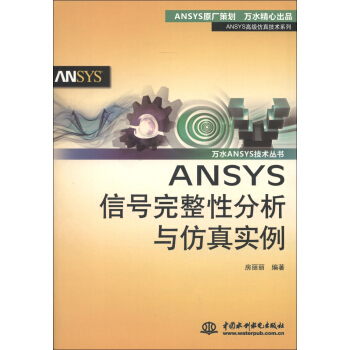
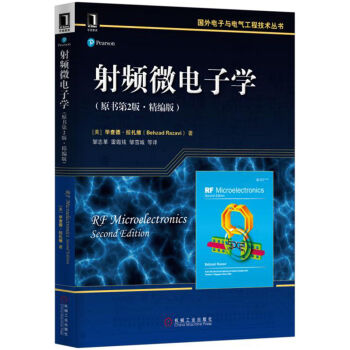

![国防电子信息技术丛书·合成孔径雷达:系统与信号处理 [Synthetic Aperture Radar: Systems and Signal Processing] pdf epub mobi 电子书 下载](https://pic.qciss.net/11375252/rBEhVFK0B30IAAAAAAHYlXBeG_wAAHDjwNICiIAAdit466.jpg)
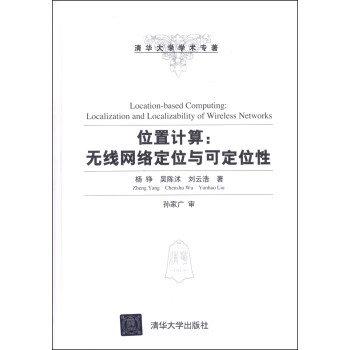
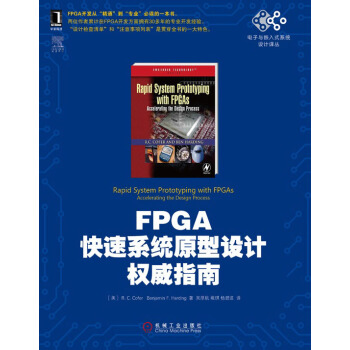
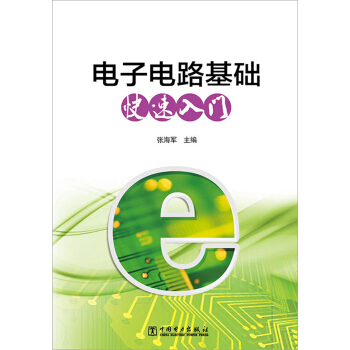
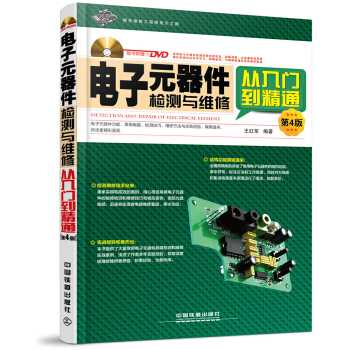
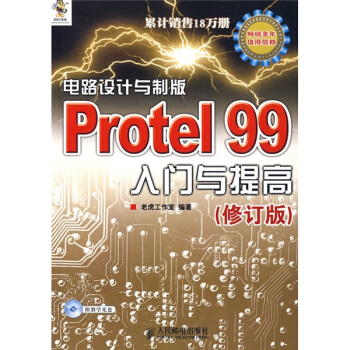

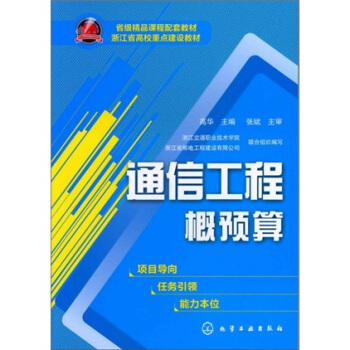
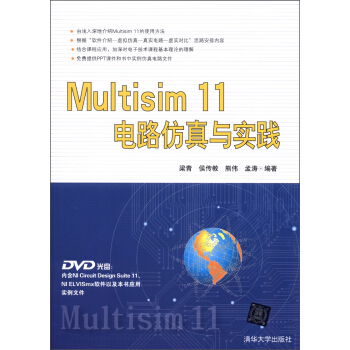
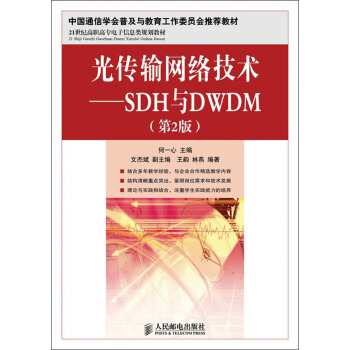
![数字信号处理(第三版) [Understanding Digital Signal Processing, Third Edition ] pdf epub mobi 电子书 下载](https://pic.qciss.net/11695364/55717c4cN477ce444.jpg)
